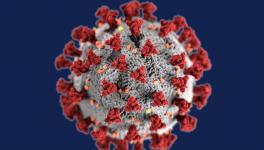Rumours, Epidemics and Social Illness: History Repeats Itself

In mid-nineteenth century London, when cholera and plague killed thousands, a line found itself oft-repeated.It went: “Whilst pestilence slays its thousands, fear slays its tens of thousands.” Rumour, misinformation and disinformation have been ruling our information systems whenever there were epidemics, in any part of the globe. So is the case with the Coronavirus. Those in the know blame social media tools such as WhatsApp, Facebook and Twitter for the quick spread of misleading information. However, a peek into the history of some of the most devastating epidemics paints a different picture. Rumours and misinformation about the disease circulate widely even when there was no internet. The need for fighting these is as important as the fight against coronavirus itself.
When cholera erupted in London during mid-nineteenth century, people were making a dash for both doctors and priests, in equal numbers. They in-turn were marching the streets to ensure the treatment to cholera infected people. In his book, ‘The Ghost Map’, Steven Johnson mentions some of the popular solutions for the plague, including Saunder’s anti-mephitic fluid, opioids, brandy, leeches, and laxatives. Use of brandy was recommended even by physicians even though it increases dehydration, which is fatal in the case of cholera. Use of brandy became so customary that people used to pour brandy to purify houses as people do with water from the Ganga.
These rumours spread fast, despite the fact that people like John Snow had proved that cholera was spreading through contaminated water. In the early days, even the government refused to accept his proposition. Even after the government and local bodies approved of his proposition, people were not ready to accept it. In order to make common people understand what he said, he had to sketch a map to show that more people died in localities closer to water bodies, especially water pumps. Despite scientific and rational attempts to understand and prevent the spread of cholera, a large chunk of people continued to believe and contribute to the spread of rumours related to cholera. When governments started sewer construction to control its spread, rumours that sewer excavations had unearthed the decaying but still pestilent corpses from the plague burial grounds, started doing rounds of neighbourhoods. Major newspaper reported and criticised sewer builders to the extent that the government had to appoint a commission to investigate the matter.
The case of the coronavirus is much the same, especially in India. Messages are being circulated about the innovation of medicine for COVID-19. The media presents cases of those cured of coronavirus as the innovation of successful medicine against coronavirus, without mentioning that almost 90% of all individual infecteds with coronavirus across the globe, are being successfully diagnosed. The death ratio due to corona virus across the world is between 3%and 4%, as per the WHO. It is at this time that measures including urine of cow, tulsi, sunlight, etc are being passed off as ‘medicine’ for coronavirus. Our political representatives went a step ahead, chanting ‘Go Corona Go’ in a mass gathering as a precautionary measure to fight against the coronavirus. In India, people believeda collective sound of bells, shells, steel plates was found by NASA as acting against COVID-19.
Despite repeated appeals from medical specialists, people are travelling to their native villages. News of auto rikshaw drivers driving from all the way from Delhi to Bihar emerged when a nationwide appeal for locdown was announced. Travelling could be the most fatal act in these situations, withmigrant labourers from Bihar and UP compelled to travel back to their native villages in Maharashtra and Gujarat. Those from the North-East have been seen to be prone to racial abuse and attacks. Since the coronavirus scare began,the narrative that Chinese people and Chinese cultures are to be blamed for this epidemic, took hold. Instead,we should place it in context, considering that it was India where the cholera epidemic started, spreading across the world. The plague started in Europe and reached every corner of the globe. Johnson writes that during the nineteenth century, at the time of cholera and plague, the unhygienic and filthy life of working class and Jews were blamed for the spread of epidemics. Johnson also pointed out that the cholera and plague affected both the rich and poor equally. Instead of engaging in blame games, there is a need for a global initiative to fight a global crisis.
Sanjeev Kumar works with TISS, Mumbai, as Program Manager. He can be reached at [email protected]. The views are personal.
Get the latest reports & analysis with people's perspective on Protests, movements & deep analytical videos, discussions of the current affairs in your Telegram app. Subscribe to NewsClick's Telegram channel & get Real-Time updates on stories, as they get published on our website.
























